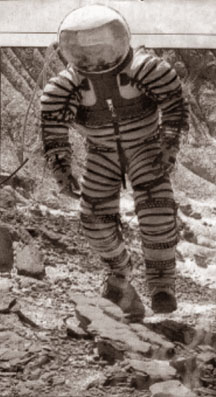|
observer |
|
|
|
|
|
OTHER LINKS |

|

|

|
|
|
|
|
Now, that Ottoman dream is finally being realised. But the modern version of that vision has hit a historical stumbling block.
Istanbul archaeologists have uncovered a fourth century port at the site where engineers plan to build a 21st-century railway hub. The Marmaray project cannot even begin work in the area until excavations are complete.
Boring(piercing/making a hole) beneath the waves, marine engineers are preparing the ground for the deepest tunnel of its kind. "We are strengthening the soil by injecting concrete into the seabed so we can place the tubes easily and take measures to counter earthquakes in the area," an engineer explains. Parts of the Marmaray tunnel will run just 6km from the active North Anatolian fault line.
The Istanbul authorities hope the Marmaray project will ease congestion(overcrowding) in a sprawling(widespread) and increasingly overcrowded city. The rail link is expected to carry well over a million passengers a day, significantly reducing boat traffic on the Bosphorus and car congestion on land.
The railway is supposed to be running by 2010. Now its managers are not so sure.
When shanty homes were cleared from the site on the European side of the city, archaeologists uncovered treasures beneath, of a kind never before discovered here.
Just a few metres below ground, they found an ancient port of Constantinople - named in historical records as the Eleutherios harbour, one of the busiest of Byzantium.
"We've found 43m of the pier so far," chief archaeologist Metin Gokcay explains.
Gokcay and his team have found leather sandals, around a thousand candle-holders and hairbrushes and have also uncovered perfectly preserved ancient anchors and lengths of rope.
But perhaps, the site's most treasured find is stored beneath a large protective tent.
Inside, dozens of jets spray water to preserve a wooden boat that is more than 1,000 years old. Its base, about 10m long, was discovered intact beneath what was once the sea.
The dig has uncovered eight boats in total, and archaeologists believe there are more to come. It is a dream discovery for them, but a nightmare for the Marmaray management.
"It's true I lose sleep over this. I worry we won't make it on time," admits Marmaray Project Manager, Haluk Ozmen. He says the dig is only delaying work at the Yenikapi site for now, but warns, it will soon affect the entire project. "Everything is in the hands of the archaeologists now."
Engrossed in their task, those archaeologists refuse to be rushed by commercial concerns.
Their work was scheduled to finish five months ago, but they now reject all talk of deadlines. "The Marmaray team cannot spread their cement or tunnel any deeper here until we finish," states Gokcay.
"They have to wait for us."
BBC News
Mars space suit made by students
Fabio Sau says moving from his native Italy to attend the University of North Dakota (UND),USA was like "coming to another planet". And now, he's using the northern central US state's wildest terrain for a simulated (imitated) mission to Mars.
Sau is the guinea pig for an experimental Mars space suit that he and about 40 other students from five North Dakota schools developed under a US$100,000 grant from NASA.
The 21kg suit was formally unveiled recently in a crater like area in the North Dakota Badlands, the highly eroded landscape that researchers say resembles Martian terrain.
Project Manager, Pablo de Leon, 41, an aerospace engineer at UND said NASA got a bargain with the North Dakota project.
Suit components developed by the students have been the basis for three patent applications so far, he said.
And the grant is a tiny fraction compared with the price tag of US$22 million each, for space shuttle suits, he said.








